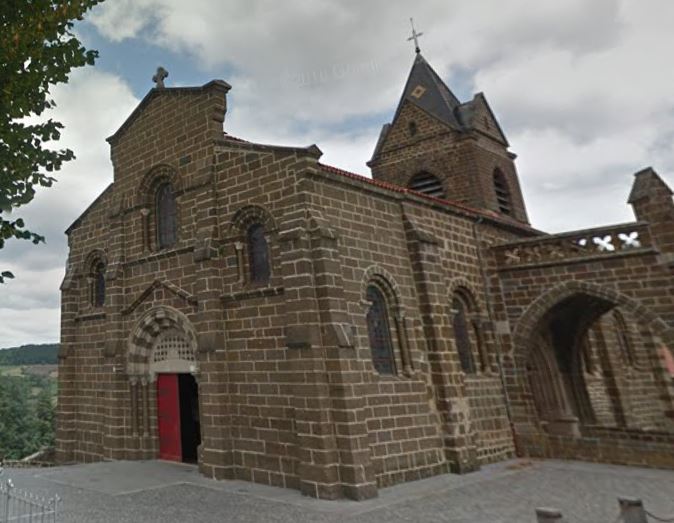L’église Saint-Martin de Polignac a un chœur construit au Xe et XIe siècle, une nef construite au XIIe siècle. une dernière travée est ajoutée à la fin du XIXe siècle.
L’église est une possession de chanoine jusqu’à ce que le vicomte de Polignac prenne possession de l’édifice. En 1128, l’évêque rend l’église aux chanoines. Elle devient une possession des Jésuites en 1588, qui la rétrocèdent en 1597 maiis la reprennent en 1603, appuyés par le parlement de Toulouse. Les villageois y sont opposés et refusent de payer la dîme jusqu’en 1617, où le Parlement de Bordeaux règle le problème.
Des fresques murales sont retrouvées en 1923, dont un Jugement dernier.
L’église abrite une statue en bois doré, du XVIIe ou XVIIIe siècle, figurant saint Martin, se trouvant contre le pilier droit du chœur. Saint-Martin y est représentée en évêque, mitré, barbu, tenant sa crosse dans la main droite et levant la main gauche. Ses vêtements et sa cape sont dorés.
The church of Saint-Martin de Polignac has a choir built in the 10th and 11th centuries, a nave built in the 12th century, and a final bay added at the end of the 19th century.
The church was a canon’s possession until the Viscount of Polignac took possession of the building. In 1128, the bishop returned the church to the canons. It became the property of the Jesuits in 1588, who retroceded it in 1597 but took it back in 1603, supported by the Parliament of Toulouse. The villagers were opposed to this and refused to pay the tithe until 1617, when the Parliament of Bordeaux settled the problem.
Wall frescoes were found in 1923, including a Last Judgement.
The church houses a gilded wooden statue, from the 17th or 18th century, of Saint Martin, which stands against the right pillar of the choir. Saint Martin is depicted as a bishop, mitred, bearded, holding his crozier in his right hand and raising his left hand. His clothes and cloak are gilded.

 "/>
"/>